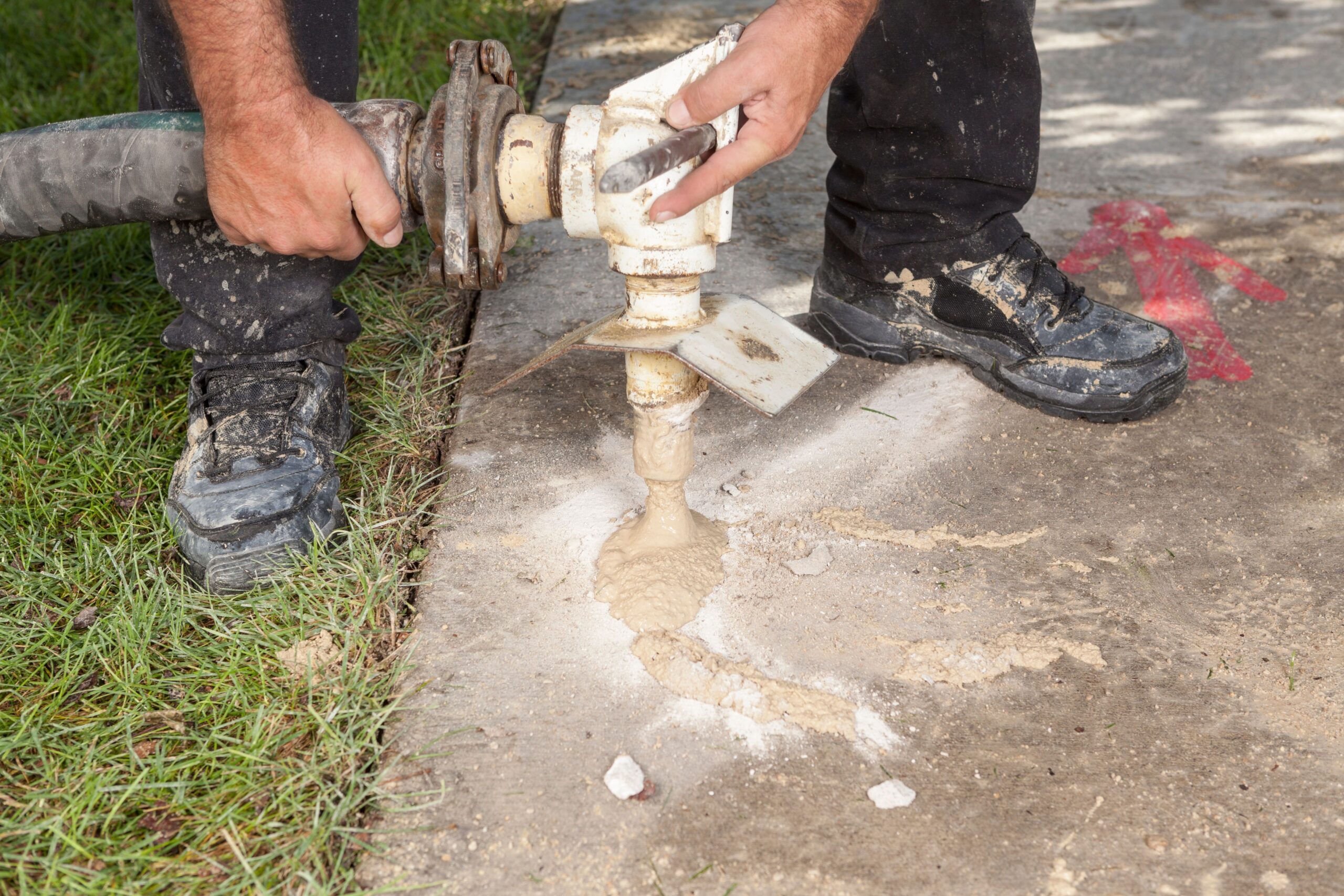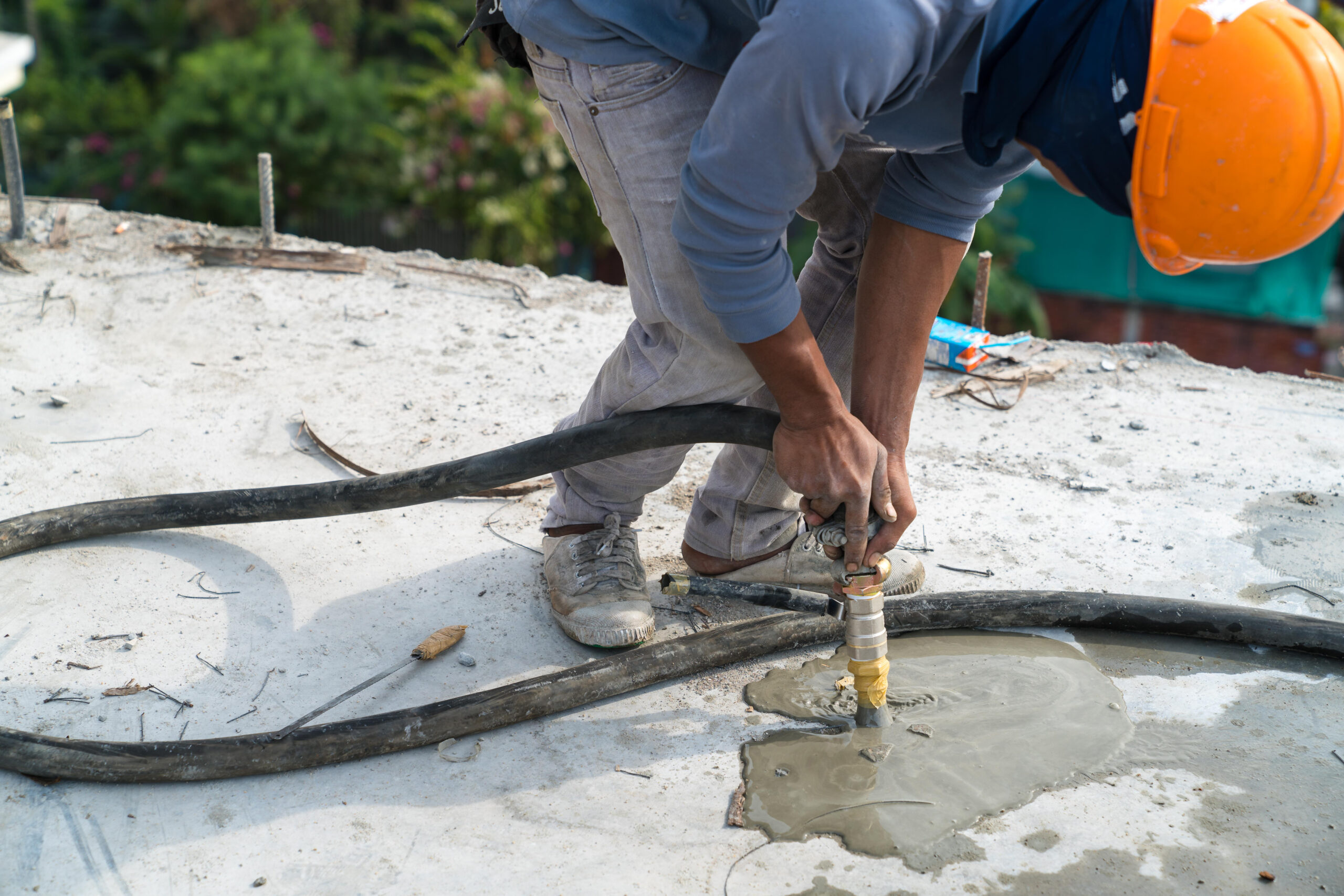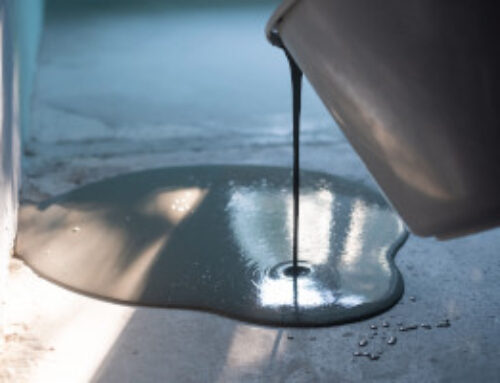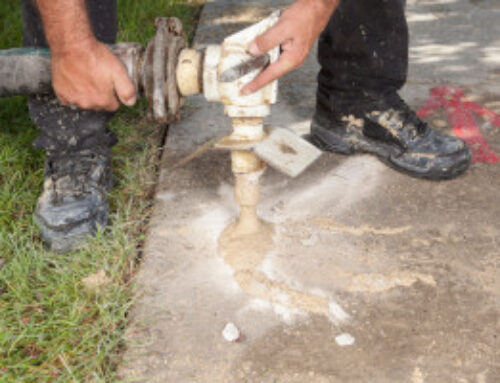There is nothing like home, the most welcoming place in the world. But the expansive clay soils underneath your home are not so generous, and might result in the concrete front porch pulling away or sinking.
Now, suddenly, you have a problem that is not just structural, but also affects the aesthetic appeal of your home. Additionally, these structural issues can cause injuries to you or your guests. This means it’s out of the question to leave it like that.
So, how do you fix this issue?
If you find yourself in a similar situation, we have it figured out for you. Let’s dive in.
How to Fix a Concrete Front Porch Pulling Away?
When a concrete front porch starts pulling away from your home, it’s often a warning sign of underlying soil instability or foundation movement.
So, if you’re thinking about fixing it, you need to understand a few key factors, such as the type of soil beneath your home, the construction of your porch, and the extent of the damage.
Surprisingly, 20% of homes with expansive clay problems eventually face serious foundational issues over time, so be cautious if your home is one of them.
To fix this, however, there are two highly trusted repair methods used by professionals:
- Concrete Leveling (also known as slabjacking or concrete lifting)
- Helical Piers (deep structural support for foundations)
Concrete leveling is ideal for minor to moderate foundation settlement issues. It involves lifting the porch back to its original height using techniques like mudjacking, polyjacking, or grout pumping.
On the other hand, Helical piers are a more permanent solution for serious problems caused by weak or shifting soils. These steel piers are screwed deep into stable ground, bypassing the problematic surface layers and transferring the porch’s weight to load-bearing bedrock.
Let’s first deal with concrete leveling, a reliable method for fixing a sinking porch.
Method #1: Concrete Pulling Or Concrete Leveling
As the name suggests, concrete leveling restores the porch separating from the house to its original position by realigning damaged surfaces. It’s a cost-effective solution if your porch has sunk over time. Usually, it is performed in the following three ways:
- Mudjacking or Slabjacking
- Polyurethane Foam Injection or Polyjacking
- Grout Pumping or Cement Grout Injection
Each method has a different purpose, from structural lifting to cosmetic improvements.
1. Mudjacking or Slab Jacking

Mudjacking refers to a process of creating a mixture of sand, soil, and water. This mixture is pumped below the surface of the concrete front porch pulling it away, to lift it back to its original position.
Some people also like to add Portland cement in this mixture to strengthen it further and improve the recovery process.
It’s worth remembering that slabjacking does nothing to change the appearance of your existing porch. It is only meant to lift it up and give it extra support.
Mudjacking can handle porch damage to an extent, but if the issue is foundational and too widespread, you should look elsewhere.
2. Polyurethane Foam Injection (Polyjacking)
While mudjacking is a traditional lifting method, polyurethane foam injection is a more advanced and precise method that uses expanding polymer foam to lift and stabilize the concrete front porch.
Instead of mud, you inject a special foam into the cracks and voids in the damaged porch. The foam expands to fill the voids and gently raises the slab back to its proper position.
It is a more precise method than mudjacking because the expanding polymer creates a controlled lifting pressure while simultaneously filling all voids.
3. Grout Pumping

Grout pumping uses flowable cement-based grout to lift and stabilize the concrete front porch pulling away.
This technique bridges the gap between traditional mudjacking and modern polyurethane foam injection, offering superior strength and durability. Instead of using soil, grout contains Portland cement, fine aggregates, water, and polymer additives.
Method #2: Helical Piers
If your concrete porch is pulling away due to severe soil instability, superficial fixes like mudjacking won’t be enough. This is where helical piers offer deep structural solutions by anchoring your porch to stable ground below the problem zone.
But what are helical piers? They are steel shafts with helix-shaped plates welded to them.
They work like giant screws, twisted deep into the ground until they reach firm, load-bearing strata. Once in place, brackets attach the pier to your porch foundation, lifting and stabilizing it permanently.
When Are Helical Piers the Best Option?
Helical piers are recommended when:
- Your porch has deep structural cracks or large separations.
- The porch foundation was poorly constructed or not properly reinforced.
- You’re dealing with ongoing or severe soil movement, such as in expansive clay, sandy soils, or areas prone to erosion.
They’re especially beneficial when the porch is partially collapsed or continuing to sink. And the best part? They can last for over 100 years with minimal maintenance.
Concrete Leveling vs Helical Piers: A Detailed Comparison
After discussing the two popular methods for fixing a front porch that is pulling away, it’s time to see how they compare to each other.
| Method | Mudjacking | Polyurethane Foam | Grout Pumping | Helical Piers |
|---|---|---|---|---|
| Materials Used | Sand, soil, water, and Portland cement | Two-part expanding polyurethane resin | Flowable cement grout | Galvanized steel shafts |
| Lift Mechanism | Hydraulic pumping of slurry | Chemical expansion of lightweight foam | High-pressure injection of grout | Mechanical screw anchoring |
| Cure Time | 24–48 hours | 15-30 minutes | 24–48 hours | Immediate |
| Water Resistance | Average | Excellent | Good | Excellent |
| Lifespan | 5–10 years; in some cases 20+ years | Easily 10+ years | Up to 40 years | 150 years |
Causes of the Porch Separating from the House
From soil erosion to tree roots, many factors contribute to a front porch pulling away from the house. Below, we’ll discuss these issues in detail.
1. Soil Settlement and Erosion
The most common cause of a porch separating from a house is unstable soil. Indiana is especially susceptible to this issue, with 100 million tons of its soil getting eroded each year.
When the ground beneath your porch shifts or washes away, it creates voids that allow the concrete to sink and pull away from your home’s foundation.
2. Frost Heaves
Frost heaves are a common occurrence in Indiana, where natural freeze-thaw cycles can increase the gap between the porch and the house. Water in the soil freezes and expands upward in winter, lifting the porch.
When the ground thaws during warmer months, the porch settles back down but doesn’t return to its original level. This process repeats year after year, worsening the distance between them.
3. Inadequate Base
Many older porches are built without proper structural support. They have a shallow footing that doesn’t extend below the frost line, or the footings are undersized and cannot support the weight.
It is also possible that the concrete in the footings was improperly cured and never reached full strength. To fix it, you might need a complete porch foundation repair.
4. Poor Drainage Around Porch
When drainage systems fail from clogged gutters, improper grading, or broken downspouts, water accumulates around your porch’s foundation.
This saturated soil loses its load-bearing capacity, essentially turning to mud that can no longer support a concrete porch. Over time, it worsens the problem of the concrete front porch pulling away from the house.
Usually, the signs of porch separation due to moisture are identifiable in the form of persistent puddles near the porch base or white mineral deposits on the concrete surface.
5. Tree Root Movement
Mature trees within 10–15 feet of your porch can cause a surprising amount of damage. If your porch has moisture underneath, thirsty roots grow towards it and can stretch three times the width of the branches above the ground.
As more seasons pass, these roots thicken and exert pressure, leading to a cracked concrete porch.
The warning signs are visible even before serious structural issues happen. You may notice a raised concrete surface near the tree, roots protruding beneath the porch, or sudden tilting during droughts when roots become more aggressive in their search for water.
Why Should You Repair a Concrete Front Porch That Is Pulling Away?
From losing the curb appeal of your home to safety hazards, there is a lot that can go wrong when your front porch pulls away. Surely, you don’t want to deal with any of these problems.
So, let’s discuss why fixing your front porch is critical before it is too late.
1. Structural Damage to Your Home
A concrete front porch pulling away doesn’t just affect the slab itself; it can compromise your home’s foundation. As the porch pulls away, it creates gaps that expose your foundation to water infiltration, soil erosion, and shifting pressure.
Over time, this may lead to cracked walls, misaligned doors and windows, or uneven settling of the entire structure.
2. Safety Hazards
An uneven or separated porch becomes a tripping or falling risk, especially for children, elderly family members, or visitors. Cracks and gaps widen over time, creating unstable surfaces that could collapse under weight.
3. Water Damage
Gaps between the concrete front porch and the house allow rainwater to seep underneath, which softens the soils and increases erosion. Pooled water can also penetrate the home’s foundation, leading to basement leaks, mold growth, and wood rot.
4. Property Value
A sinking porch is an eyesore that deteriorates the curb appeal of your home. If left unrepaired, it can lower your home’s market value and make it harder to sell.
Investing in professional repairs ensures your property retains its worth, and you can sell it at a decent margin.
FAQs
Fix Your Sinking Porch With Crossroads Foundation Repair
A concrete front porch pulling away isn’t just a bad sight; it is a safety hazard and a threat to your home’s structural integrity. Whether your home sits on Indiana’s shifting clay, sandy erosion-prone areas, or high-water-table zones, the right repair method can breathe new life into your porch.
And to implement that method, you need a reliable concrete leveling repair service. That’s where Crossroads Foundation Repair comes in. We don’t just patch problems; we fix them for good.
Don’t wait for those small gaps to become big headaches. Contact us today to fix your porch problems.





